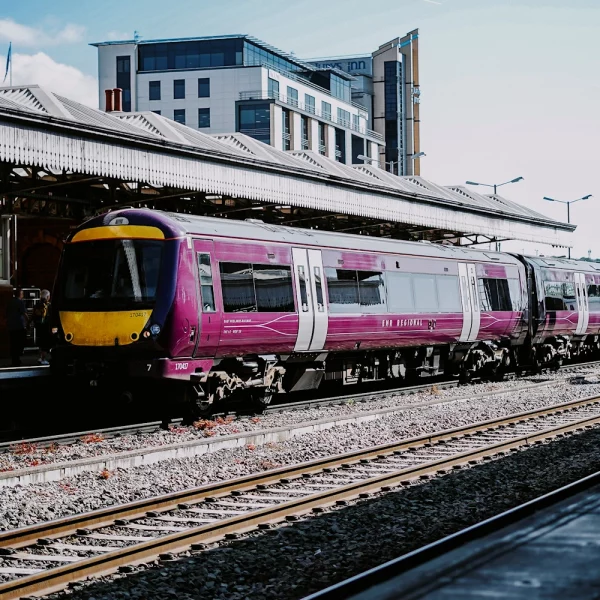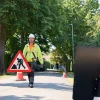Streetwave Test Mobile Data Performance on London to Sheffield Train

Network analyst firm Streetwave has today shared the results from a recent survey they conducted, which tested the mobile broadband coverage and performance of 4G and 5G networks – including EE, Three UK, Vodafone and O2 – while travelling along the Midland Main Line (MML) from London to Sheffield in Yorkshire via the East Midlands.
The rail route involved in this study typically connects London St Pancras to Sheffield, stopping at stations including Leicester and Derby on the way (the journey lasts about 2 hours and 23 minutes). More than 25 million passengers use the Midland Main Line each year.
Streetwave is understood to have taken their portable data collection equipment onboard for just one of these trips, thus the results below should be considered fairly anecdotal, albeit still interesting. The test itself was conducted on 2nd June 2025 and started at 5:32pm from London St Pancras, with the train being mostly full during the journey.
Advertisement
For those with an interest in such things, the train itself was a Class 222 Meridian model operated by East Midland Rail (EMR). As usual, all the mobile operators were measured and their Essential Coverage scores across the journey have been pasted below.
Streetwave defines Essential Coverage as being reflective of locations where the network provides users with speeds of above 1Mbps download, 0.5Mbps upload, and below 100ms (milliseconds) of latency (i.e. covering or allowing only the most basic of use cases / needs).
Essential Coverage Scores
Put another way, the company’s simulated passenger on each mobile network spent the following amount of time WITHOUT a dependable internet connection on the journey: Vodafone – 1 hour 42 minutes, EE – 1 hour 46 minutes, Three UK – 1 hour 56 minutes, and O2 – 1 hour 59 minutes. We also get some scores for mobile broadband speed.
Median (Average) Download Speeds
1. EE – 11.2Mbps
2. Three UK – 3.7Mbps
3. Vodafone – 3.5Mbps
4. O2 – 1.9Mbps
Overall, Vodafone and EE seem to do the best for mobile coverage, while EE was the clear leader in terms of mobile broadband speeds. But equally none of the mobile operators did brilliantly and O2 was particularly poor. Clearly this is one line that may be ripe for future improvement.
Advertisement
Mark is a professional technology writer, IT consultant and computer engineer from Dorset (England), he also founded ISPreview in 1999 and enjoys analysing the latest telecoms and broadband developments. Find me on X (Twitter), Mastodon, Facebook, BlueSky, Threads.net and Linkedin.
« Freeola Launch New UK Broadband Services via Trooli’s Network
Advertisement
Leave a Reply Cancel reply
Privacy Notice: Please note that news comments are anonymous, which means that we do NOT require you to enter any real personal details to post a message and display names can be almost anything you like (provided they do not contain offensive language or impersonate a real person�s legal name). By clicking to submit a post you agree to storing your entries for comment content, display name, IP and email in our database, for as long as the post remains live.
Only the submitted name and comment will be displayed in public, while the rest will be kept private (we will never share this outside of ISPreview, regardless of whether the data is real or fake). This comment system uses submitted IP, email and website address data to spot abuse and spammers. All data is transferred via an encrypted (https secure) session.























































Results aren’t surprising. Mobile coverage on this line is utterly dire. I’ve long stopped trying to get any online work done whilst travelling the route, as it’s little but an exercise in frustration. Serves better as a couple of hours of reflective downtime.
220/221/222 trains are well known for being Faraday cages due to their construction and metallised windows, so hardly a shock that the signal is bad and hence not all down to the mobile networks.
On old HSTs the signal was much better, but still had gaps. Hopefully the new 810s will be better if they ever actually make it into service.
A report on one run, on a train known for blocking mobile signals is not a very useful one.
You can run the test 10 times if you wish, I doubt signal inside would improve, as not only networks in general suck, but because of the trains themselves. And since people travel on this line and on these trains, I think it’s useful to know the amazing experience they get.
I’ll be taking this exact journey in 2 weeks, and deliberately selected a table seat with a socket in order to do some work. Good to know I will be better off downloading an audiobook to listen to instead.